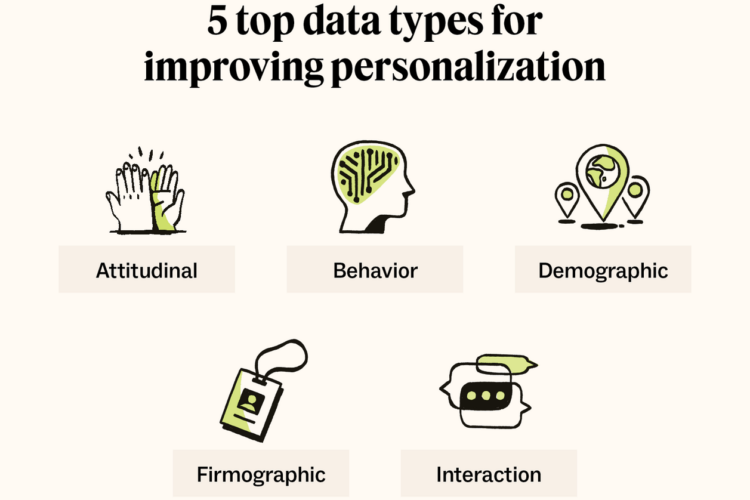
I. Understanding the importance of personalization
II. Implementing data-driven personalization strategies
III. Creating personalized content for different audience segments
IV. Utilizing technology for effective personalization efforts
Personalization is key in today’s digital world. It’s not just about customizing your online experience; it’s about creating a connection with your audience. Personalization can make a huge difference in how your brand is perceived and can significantly impact your bottom line.
When you personalize your content, you’re showing your audience that you care about their needs and preferences. You’re making them feel valued and understood, which can lead to increased engagement and loyalty. In fact, studies have shown that personalized experiences can result in higher conversion rates and increased customer satisfaction.
Think about it – would you rather receive a generic email blast that’s clearly been sent to thousands of other people, or a personalized message that speaks directly to your interests and concerns? The answer is pretty obvious. Personalization can help you stand out from the competition and build lasting relationships with your customers.
In a world where consumers are bombarded with countless messages every day, personalization is what will make your brand memorable. It’s what will make people pay attention to what you have to say and, more importantly, take action. So, if you want to make a real impact with your marketing efforts, personalization is the way to go.
Implementing Data-Driven Personalization Strategies
Hey there! So you’ve realized the importance of personalization in your marketing efforts, and now you’re ready to dive into the nitty-gritty of how to actually implement data-driven strategies to make your content more tailored to your audience. Well, you’re in the right place! Let’s break it down, shall we?
1. Collecting Data
The first step in implementing data-driven personalization strategies is to collect the right kind of data. This could include demographic information, browsing behavior, purchase history, or any other relevant data points that can give you insight into your audience’s preferences and interests. With this information in hand, you’ll be able to create more targeted and personalized content that resonates with your audience on a deeper level.
2. Analyzing Data
Once you’ve collected the data, it’s time to analyze it to identify patterns and trends that can help you better understand your audience. By leveraging analytics tools and data analysis techniques, you can gain valuable insights into what makes your audience tick and tailor your content to meet their needs and expectations.
3. Segmenting Your Audience
Segmenting your audience into different groups based on their preferences, behaviors, or demographics can help you create more personalized content that speaks directly to their interests and needs. By dividing your audience into segments, you can deliver targeted messaging that resonates with each group, ultimately driving engagement and conversion rates.
4. Personalizing Content
Now that you have a better understanding of your audience and have segmented them accordingly, it’s time to start personalizing your content. This could include customizing email campaigns, website content, product recommendations, or any other touchpoints with your audience to make the experience more tailored and relevant to each individual. Remember, personalization is all about making your audience feel seen and understood, so don’t be afraid to get creative and experiment with different strategies!
5. Testing and Iterating
Lastly, it’s important to continuously test and iterate on your personalization strategies to ensure they’re delivering the results you’re looking for. By monitoring key performance metrics and gathering feedback from your audience, you can identify what’s working well and what could be improved upon, allowing you to refine your approach and optimize your personalization efforts over time.
So there you have it – a step-by-step guide to implementing data-driven personalization strategies that will help you connect with your audience on a deeper level and drive better results for your business. Remember, personalization is not just a trend – it’s a powerful tool that can help you stand out in a crowded digital landscape and build long-lasting relationships with your customers. So go forth, gather your data, segment your audience, and start personalizing your content like a pro!
Creating personalized content for different audience segments
Hey there! Are you looking to take your marketing efforts to the next level? Well, you’re in the right place because we’re going to talk about creating personalized content for different audience segments. When it comes to connecting with your audience in a meaningful way, personalization is key. And one way to do that is by tailoring your content to specific audience segments.
Know your audience
First things first, you need to have a solid understanding of who your audience is. Take the time to gather data and insights about their preferences, behaviors, and interests. This will help you create content that resonates with them on a deeper level. Remember, it’s not about creating content for everyone, but rather creating content that speaks to specific groups within your audience.
Segment your audience
Once you have a good grasp of who your audience is, it’s time to segment them into different groups based on common characteristics. This could be demographics, psychographics, buying behavior, or any other relevant criteria. By segmenting your audience, you can create content that is more targeted and relevant to each group.
Create tailored content
Now that you have your audience segmented, it’s time to create personalized content for each group. This could mean creating different messaging, visuals, or even offers that are tailored to their specific needs and interests. For example, if you have a group of customers who are interested in fitness, you could create content that highlights workout tips or healthy recipes. On the other hand, if you have a group of customers who are more interested in fashion, you could create content that showcases the latest trends.
Test and optimize
Finally, don’t forget to test and optimize your content to see what resonates best with each audience segment. Use A/B testing, analytics, and feedback from your audience to refine your content and make it even more personalized. Remember, personalization is an ongoing process, so continue to monitor and adjust your content to ensure it’s hitting the mark.
So there you have it, creating personalized content for different audience segments is a powerful way to connect with your audience and drive engagement. By knowing your audience, segmenting them into groups, creating tailored content, and testing and optimizing, you can create a more personalized and effective marketing strategy. So go ahead, get creative, and start personalizing your content today!
Utilizing Technology for Effective Personalization Efforts
Hey there! So, you’ve heard about the power of personalization and you’re ready to take your marketing efforts to the next level. Well, technology is going to be your best friend in this journey. Let’s dive into how you can utilize technology for effective personalization efforts.
1. Customer Relationship Management (CRM) Systems
One of the key tools in personalization is a good CRM system. This software allows you to collect and analyze customer data, track interactions, and segment your audience. By utilizing a CRM system, you can create personalized experiences that cater to the unique needs and preferences of your customers.
2. Marketing Automation Platforms
Marketing automation platforms are another essential tool for effective personalization efforts. These platforms enable you to automate personalized messages, tailor content based on customer behavior, and deliver targeted campaigns. By leveraging marketing automation, you can ensure that your messages are timely, relevant, and personalized to each individual customer.
3. Artificial Intelligence (AI) and Machine Learning
AI and machine learning technologies are revolutionizing the way businesses approach personalization. These technologies can analyze vast amounts of data to predict customer behavior, recommend personalized content, and optimize marketing campaigns. By incorporating AI and machine learning into your personalization efforts, you can deliver hyper-personalized experiences that drive engagement and conversions.
4. Personalization Engines
Personalization engines are specialized software that use algorithms to deliver personalized content in real-time. These engines can dynamically adjust website content, product recommendations, and marketing messages based on individual customer preferences and behavior. By implementing a personalization engine, you can create seamless and personalized experiences that resonate with your audience.
5. Data Analytics Tools
Data analytics tools are crucial for measuring the effectiveness of your personalization efforts. These tools enable you to track key performance indicators, monitor customer interactions, and gain insights into customer preferences. By analyzing data from your personalization initiatives, you can refine your strategies, optimize your campaigns, and continuously improve the customer experience.
So, there you have it! By leveraging the right technology, you can supercharge your personalization efforts and create engaging and personalized experiences for your customers. Remember, personalization is all about understanding your audience, delivering relevant content, and building strong relationships. So, go ahead and embrace technology to take your personalization game to the next level!










Comments